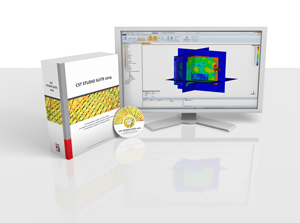CST Studio Suite is used by engineers, designers and researchers in market-leading companies in industries including automotive, aerospace, defense, electronics, healthcare and telecommunications. CST’s Complete Technology approach to simulation means that CST Studio Suite offers a range of both general purpose and specialized solvers for EM and multiphysics problems in one user-friendly interface.
Accurately simulating the phenomena that appear when components are combined into systems has long been a priority for CST, and CST Studio Suite 2017 includes several new features which allow individual components to be combined and simulated effectively.
Brand new in CST Studio Suite 2017 is Filter Designer 3D (FD3D), a design and synthesis tool for cross-coupled cavity filters. With FD3D, filter designers can design for arbitrary filter response with easy placement of transmission zeros, with a wide range of coupling resonator topologies available to realize the corresponding filter response. FD3D can also extract the coupling matrix, to help to analyze and tune a device, and is the first commercial product to include diplexer filter synthesis. When combined with CST’s unique moving mesh technology and the advanced trust region framework optimizer, FD3D allows the user to design complex high order and multimode cavity filters with unprecedented precision.
The asymptotic solver, CST’s ray-tracing solver for the analysis of very large platforms, makes a significant advance with the introduction of antenna-to-antenna coupling. Antennas can be imported as nearfield or farfield sources and integrated on the platform, and the asymptotic solver can calculate the coupling parameters between them. This feature is especially useful for systems integrators: because antenna field sources can imported from a variety of solvers or from measurement, data from a wide variety sources can be brought together in a single system-level simulation. Combined with the new nearfield monitor, users can now identify the coupling paths between antennas efficiently as well, and the new Interference Task can identify potential EMC issues caused by co-site interference.


